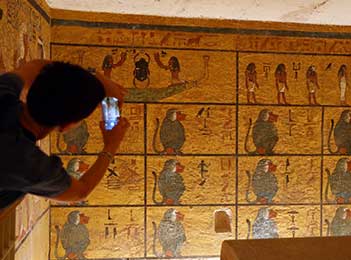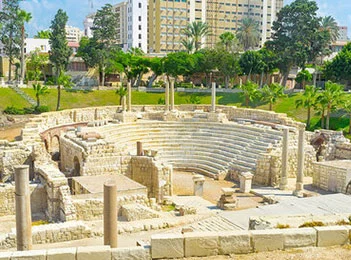The architectural style of the palace.
The palace of Mohamed Ali was built in a new design that wasn’t known in Egypt which is related to the Turkish style, this made it more unique.
The Turkish architectural style is known for creating a huge and beautiful garden that’s surrounded by large defensive walls with a few gates to be able to monitor the safety of the palace easily.
They built many kiosks all over the garden or as they call it in the Turkish language Hans or Saraya. Mohamed Ali copied many of his palace architectural styles from a very famous palace in Istanbul called Topkapi Palace. This palace was the seat of the Ottoman Empire for many years.
Inside Mohamed Ali palace you will find a small villa that hosts the employees and guards, there is also an adjoined harbor structure in the palace to dock the ships on the Nile. This is plus many different buildings related to the King.
During King Farouk’s ruling period, most of the structures of the palace were removed due to creating the new Cairo-Alexandria Agricultural Road in the 1930s.
Interesting buildings In Mohamed Ali Palace
The Waterwheel Tower
The Waterwheel Tower is the oldest building in the whole palace as it was built in 1811 very close to the Fountain Villa just in the middle of the palace garden.
This huge building is very tall as the eastern façade reaches 40 meters long and the southern one is 21 meters long. The main reason behind having this tower stand still for today is the strong stone used in its construction. The main purpose of naming this tower by the Waterwheel Tower are the 4 waterwheels located in the middle of the tower. These waterwheels were unique as they worked with machines not animals and this wasn’t normal in Egypt at that era.
The Fountain Villa
The main building of the palace is The Fountain Villa which was built very close to the Nile only 430 meters away which gives the villa a very charming view. The construction process of this villa was so special as the French consul of Egypt at that time was responsible for this process and also the Armenian engineer Yusuf Hakikan was responsible for all decorations and ornaments of the villa.
They chose to build the villa in the middle of the palace’s garden and made it in the shape of a receptacle with many doors and steps. Each door and step at the villa was leading to a unique fountain to make the living experience at the palace more special.










